Discover 11 hidden attractions, cool sights, and unusual things to do in Bakewell (United Kingdom). Don't miss out on these must-see attractions: Chatsworth House, Haddon Hall, and All Saints' Church. Also, be sure to include Nine Ladies in your itinerary.
Below, you can find the list of the most amazing places you should visit in Bakewell (England).
Table of Contents
Chatsworth House
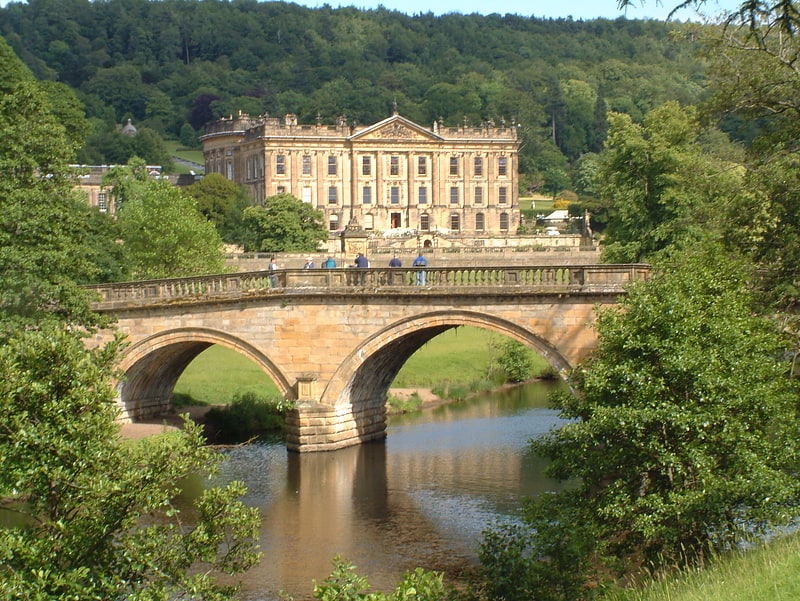
Family-friendly 1600s mansion and garden. Chatsworth House is a stately home in the Derbyshire Dales, 3.5 miles north-east of Bakewell and 9 miles west of Chesterfield, England. The seat of the Duke of Devonshire, it has belonged to the Cavendish family since 1549. It stands on the east bank of the River Derwent, across from hills between the Derwent and Wye valleys, amid parkland backed by wooded hills that rise to heather moorland. The house holds major collections of paintings, furniture, Old Master drawings, neoclassical sculptures and books. Chosen several times as Britain's favourite country house, it is a Grade I listed property from the 18th century, altered in the 19th. In 2011–2012 it underwent a £14-million restoration. The owner is the Chatsworth House Trust, an independent charitable foundation, on behalf of the Cavendish family.[1]
Address: Chatsworth Estate, DE45 1PP Bakewell
Haddon Hall

Medieval manor house with many additions. Haddon Hall is an English country house on the River Wye near Bakewell, Derbyshire, a former seat of the Dukes of Rutland. It is the home of Lord Edward Manners and his family. In form a medieval manor house, it has been described as "the most complete and most interesting house of period". The origins of the hall are from the 11th century, with additions at various stages between the 13th and the 17th centuries, latterly in the Tudor style.
The Vernon family acquired the Manor of Haddon by a 12th-century marriage between Sir Richard de Vernon and Alice Avenell, daughter of William Avenell II. Four centuries later, in 1563, Dorothy Vernon, the daughter and heiress of Sir George Vernon, married John Manners, the second son of Thomas Manners, 1st Earl of Rutland. A legend grew up in the 19th century that Dorothy and Manners eloped. The legend has been made into novels, dramatisations and other works of fiction. She nevertheless inherited the Hall, and their grandson, also John Manners, inherited the Earldom in 1641 from a distant cousin. His son, another John Manners, was made 1st Duke of Rutland in 1703. In the 20th century, another John Manners, 9th Duke of Rutland, made a life's work of restoring the hall.[2]
Address: Haddon Hall, DE45 1LA Bakewell
All Saints' Church
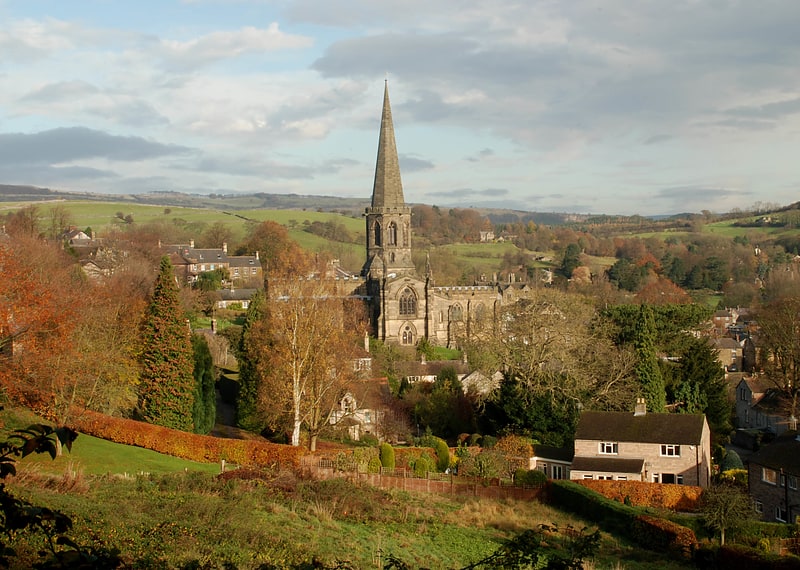
Church in Bakewell, England. All Saints' Church, Bakewell, is the parish church of Bakewell, Derbyshire. It is a Grade I listed building.[3]
Address: S Church St, DE45 1FD Bakewell
Nine Ladies
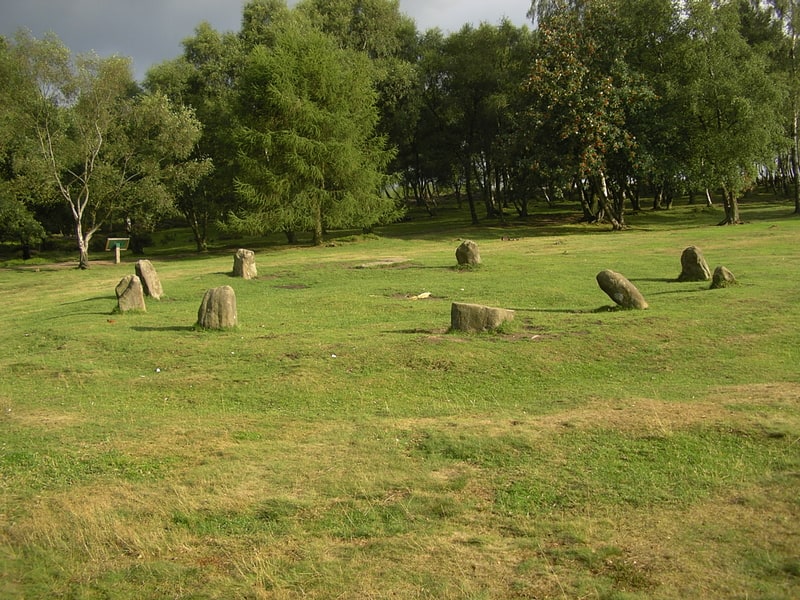
Historical landmark in England. The Nine Ladies is a stone circle located on Stanton Moor in Derbyshire in the English East Midlands. The Nine Ladies is part of a tradition of stone circle construction that spread throughout much of Britain, Ireland, and Brittany during the Late Neolithic and Early Bronze Ages, over a period between 3300 and 900 BCE. The purpose of such monuments is unknown, although archaeologists speculate that the stones represented supernatural entities for the circles' builders.
Measuring 10.8 metres in diameter, the stone circle consists of ten millstone grit stones, although for several centuries one of these was buried, providing the impression that there had been nine stones. Whether the tenth was part of the original prehistoric design or a later addition is unknown. The earth rises up around the circle, although is it unclear if this was part of a deliberate earthen bank or the unintended result of other activities. It is possible that either a hollow, a standing stone, or an earthen mound was once located inside the ring. A single monolith, the King Stone, stands to the southwest of the circle; it is unknown if this was placed there in deliberate reference to the Nine Ladies circle or whether their proximity is incidental.
During the 18th and 19th centuries, the Nine Ladies attracted the attention of antiquarians like Hayman Rooke and Thomas Bateman. Archaeological excavation took place in 2000. A wall was built around the circle in the 19th century but removed in 1985. Since the late 20th century, the Nine Ladies has been regarded as a sacred site by modern Pagan groups who conduct rituals there. From 1999 to 2010 the area around the site was home to the Nine Ladies Anti-Quarry Campaign, which sought to prevent a nearby quarrying operation.[4]
Address: Off A6, Bakewell
Bakewell Bridge
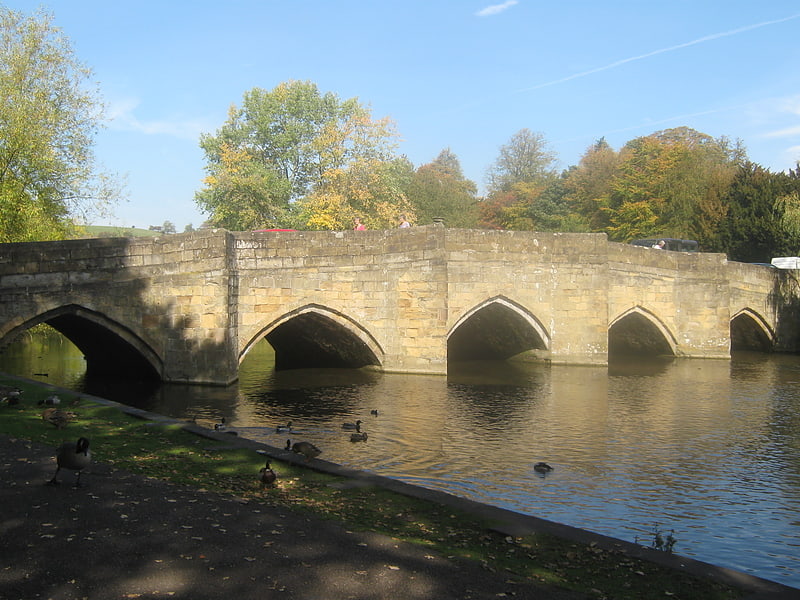
Bakewell Bridge is a Grade I listed stone arch bridge spanning the River Wye in Bakewell, Derbyshire. The bridge is also a scheduled monument.[5]
Old House Museum
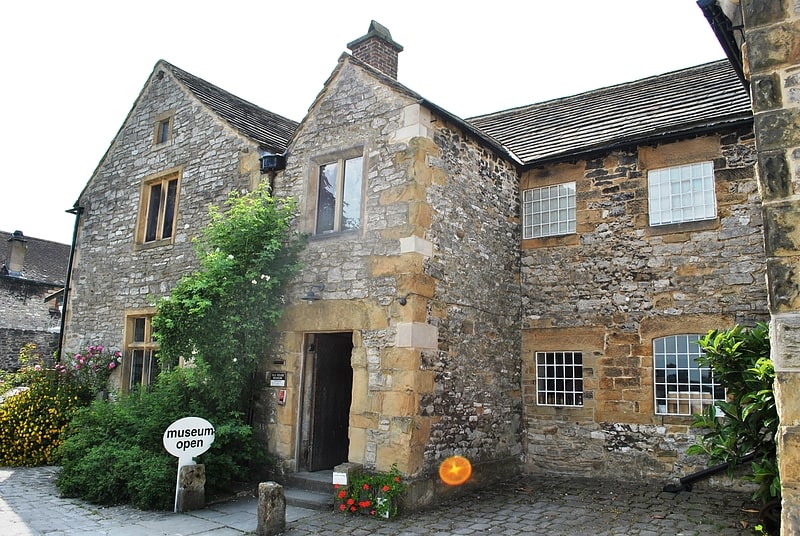
Museum in Bakewell, England. The Old House Museum in the town of Bakewell in Derbyshire is a typical 16th century yeoman's house that now houses a small museum with an exhibition of local life and artefacts.[6]
Address: Cunningham Place, DE45 1DD Bakewell
Robin Hood's Stride

Country park in England. Robin Hood's Stride is a rock formation on the Limestone Way in Derbyshire close to the village of Elton. The nearest town is Bakewell, to the north. The popular tourist spot can be accessed via the Limestone Way just off the B5056 between Haddon Hall and Winster, or from the unclassified road from Alport to Elton using either the Limestone Way, a concessionary footpath or Access Land. Both options have limited parking at the side of the road. It consists of gritstone boulders deeply seamed by water flows. Limited short climbing is possible; nearby Cratcliffe Tor provides more serious routes. The two "pinnacles" are Weasel pinnacle and Inaccessible pinnacle. An ancient road, possibly prehistoric or Roman, the Derbyshire Portway passed close to the outcrop. Nearby is Nine Stones Close, a four-stone circle, and, at Cratcliffe Tor, a rock shelter known as the Hermit's Cave, containing a crucifix carving dated stylistically to the 13th or 14th century.
Robin Hood's Stride features in an episode of The Return of Sherlock Holmes and the film The Princess Bride (1987).[7]
Address: Nr Elton, Bakewell
Gib Hill
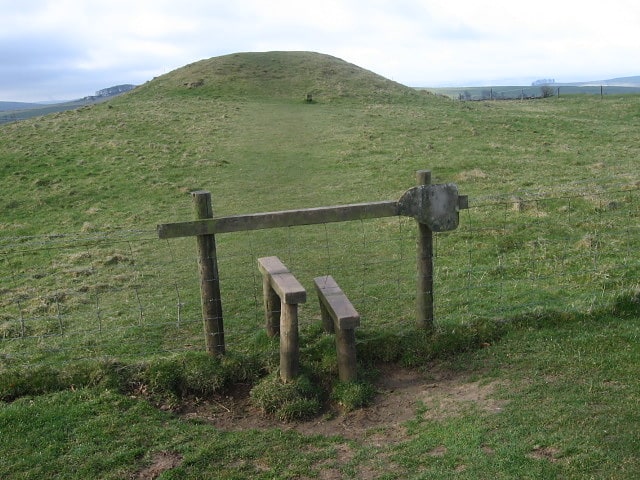
Gib Hill is a large burial mound in the Peak District, Derbyshire, England. It is thought to be a Neolithic oval barrow with an Early Bronze Age round barrow superimposed at one end. It is located some 300 metres south-west of Arbor Low henge.[8]
Harthill Hall
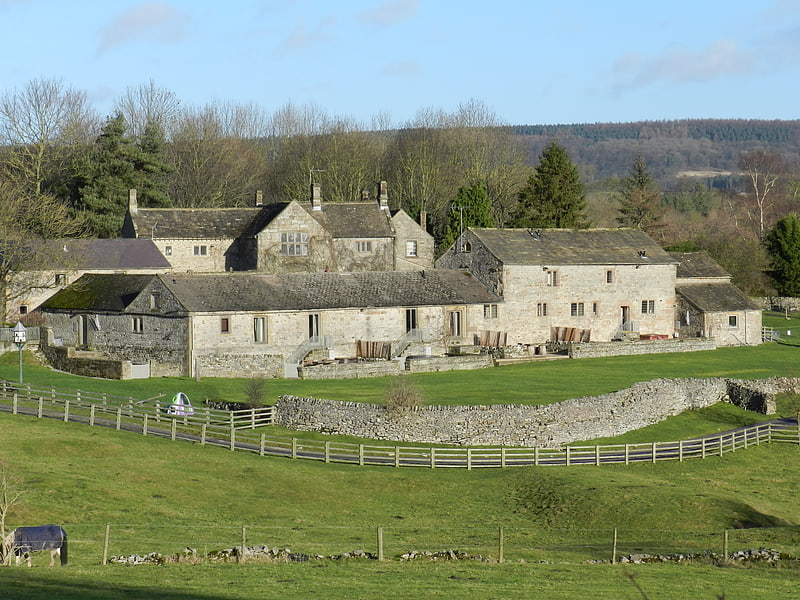
Harthill Hall was formerly the Manor House of a great 13th century Estate, and the hall is now a Grade II listed building within the civil parish of Harthill, near Bakewell, Derbyshire, England. The Manor itself is the main house of Harthill Hall and was constructed in the 16th century. The site also features the chapel, which was the original 14th-century building on the site. It once comprised a stable block, brewery and an inn.
The Manor has retained many original features such as its stone flagged floors, oak-paneled four poster bedrooms, mullioned leaded windows, ancient carved oak doors and beams throughout. The Manor has recently undergone a mammoth horticultural development to restore its once famous knot garden.[9]
Burton Closes
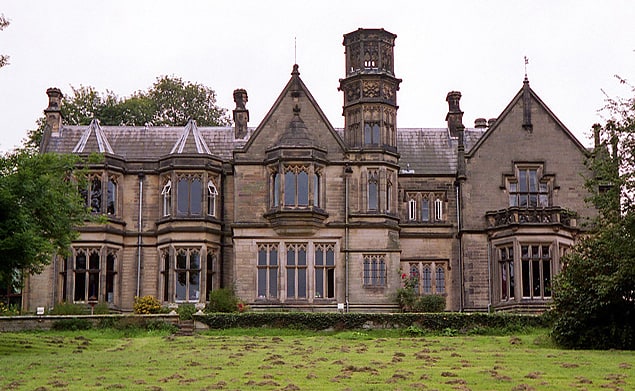
Burton Closes is a 19th-century country house, now in use as a residential nursing home, situated at Haddon Road, Bakewell, Derbyshire. It is a Grade II* listed building.
The house was newly built in 1848 for John Allcard, a wealthy Quaker banker and stockbroker of Derby. It was originally built as a modest two bedroomed house, to a design by architect Joseph Paxton with interiors by Augustus Pugin and intended as a summer retreat. It was much extended by T D Barry and E W Pugin in 1856 for Allcard's son William, a railway engineer, best known for his 1830 work on the Sankey Viaduct, Warrington, Cheshire, where he was mayor in 1848 and 1851.
The Allcard family fortunes were much reduced by a financial downturn in 1866 and in 1871 William Henry Allcard, a barrister, sold the estate.
Further improvements and extensions were made in 1888 by J B Mitchell Withers for the purchaser Smith Taylor-Whithead, who was High Sheriff of Derbyshire in 1894.[10]
Holme Hall
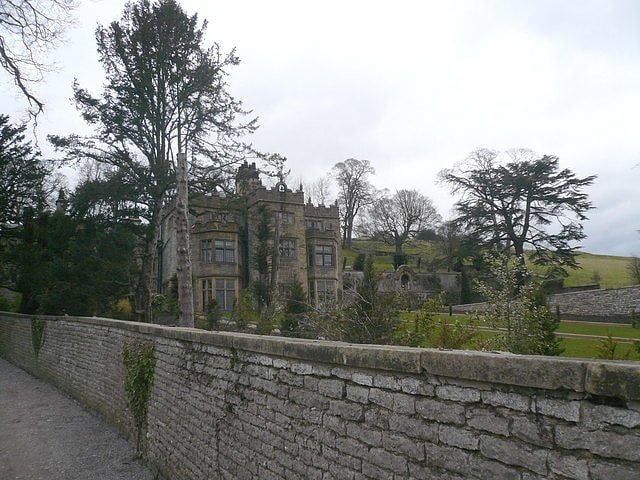
Building in the United Kingdom. Holme Hall near Bakewell, Derbyshire, is a privately owned 17th-century country house. It is a Grade I listed building.[11]
Address: Bakewell, Holme Lane